How social listening can help you plan and boost your PR campaigns
Social listening can give you an insight into how your audience has received your message and aid in measuring the success of a campaign – but this is only part of its potential.
With a deeper understanding of your existing – and potential – audiences, you can create targeted messaging from the start, pinpoint when and where a campaign should be placed and find influencers to send your message far.
How can social listening help you in campaign planning?
1. Understanding audiences
As well as enabling you to identify your target audiences with social data, social listening can show you who truly cares about your topic and is likely to engage with it.
2. Creating the right message
Once you know who has an interest in your niche, you can uncover what is relevant to them and which tone and format they are most likely to respond to.
3. Determining placement
Our lives are more digitally-connect than ever, but nobody is online 24/7. When are your audience online to see your content? What times of day do they consume and share with their communities/followers?
4. Finding relevant influencers
Traditionally, high-profile journalists writing for newsstand papers were the influencers, but the world of influence has expanded drastically. A print journalist might share your message, but do they reach your audience? A popular TikTok creator may have a large follower base, but will they engage with your content? Social listening can map this and surface the right influencer for your campaign.
5. Deciding strategy and spend
While predicting the virality of content isn’t an exact science, mapping how connected your subject, your target influencers and their communities are can give you a strong start. For your spend strategy, do you want quick shares, or traction over a longer period? Each campaign will require a different approach.
Interactions are happening across digital platforms all around the globe, constantly. Pulsar tracks these conversations on platforms including Twitter, Facebook, TikTok, Pinterest, Tumblr, VK and Sermo, alongside blogs, forums, television, radio, podcasts and review sites.
Within this cacophony of interaction is where you can find the beginnings of conversation topics, where they start to enter the mainstream and where your own message will fit.
Case study: The Climate change and sustainability conversation
Here is an example, using the global conversation around climate change and sustainability.
1. Finding the climate change audience
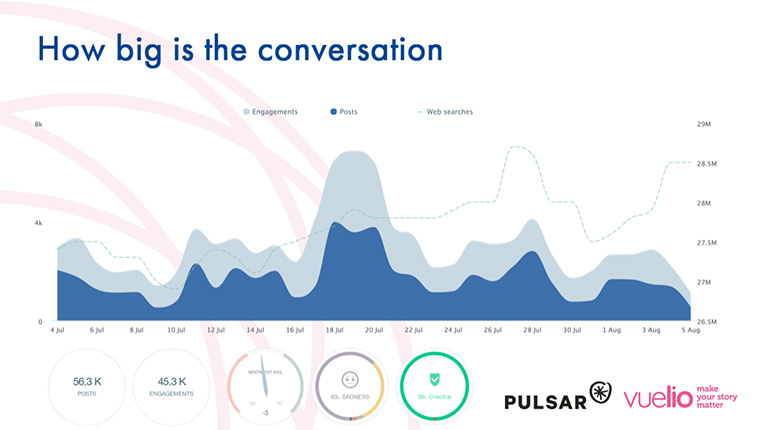
Climate change and sustainability is a busy conversation topic, looking at related engagements, posts and web searches. Data from Pulsar allows a breakdown of this audience by factors including age, location, associated interests, public figures they have an affinity with and even the content formats they prefer.
2. Creating your content
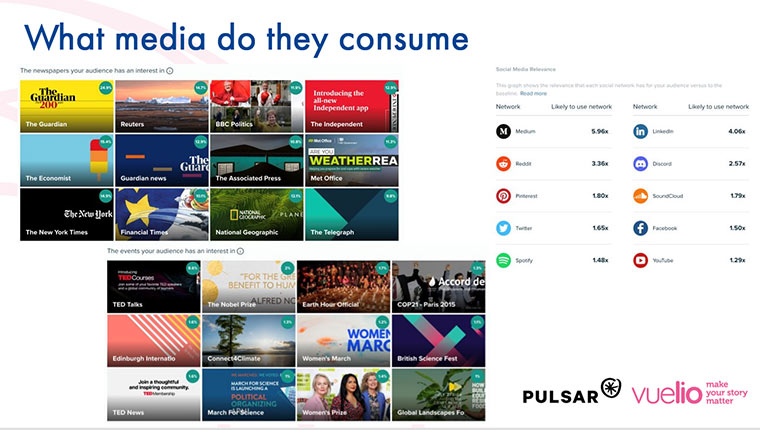
Close investigation into the climate change audience reveals the kind of media they tend to read and share – they favour The Guardian, The Independent and the Met Office as news sources. Discord and Reddit are high in their choice of social media channels. They share photos frequently, but not gifs or video quite as much.
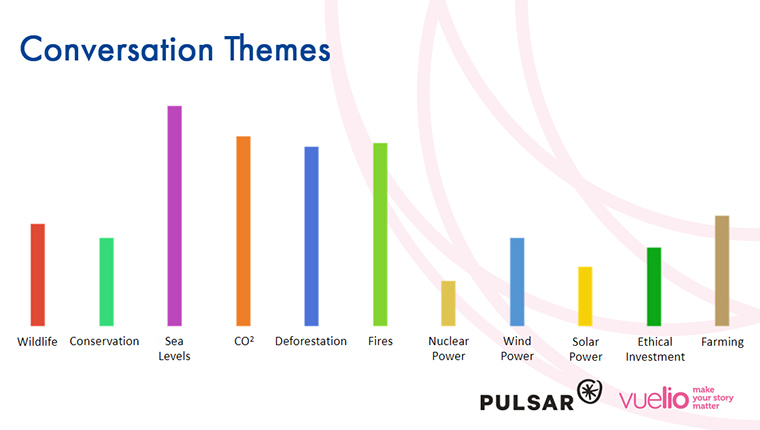
For which elements of the climate change conversation is likely to get you greater engagement – sea levels, CO2, Deforestation and Fires. Less popular content – that focusing on nuclear power.
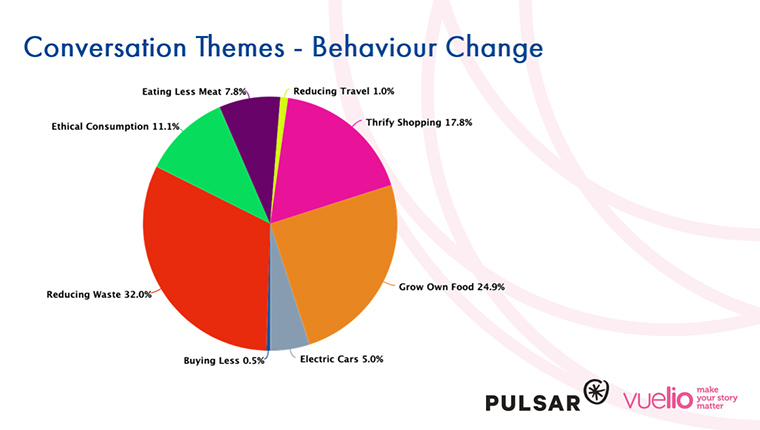
When looking at conversations around behavioral change – those topics that can change the minds and actions of this audience – waste reduction and growing their own produce is important. Travel – despite being a big story in the press over the last few months – isn’t as vital to this group.
3. When and where to share and post
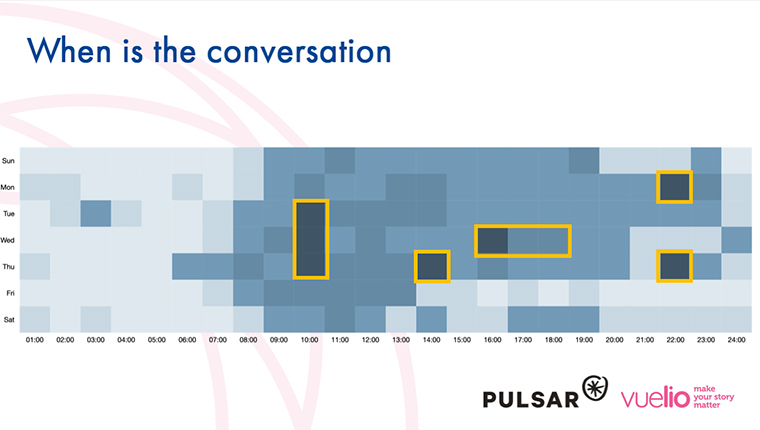
According to Pulsar tools, social conversations on this topic within this audience spikes around 10am on Tuesdays, Wednesdays and Thursdays, but goes quieter on Friday afternoons and throughout the weekend.
To target this audience, climate change content should be shared when they’re online and ready to engage.
4. Finding who will share your story
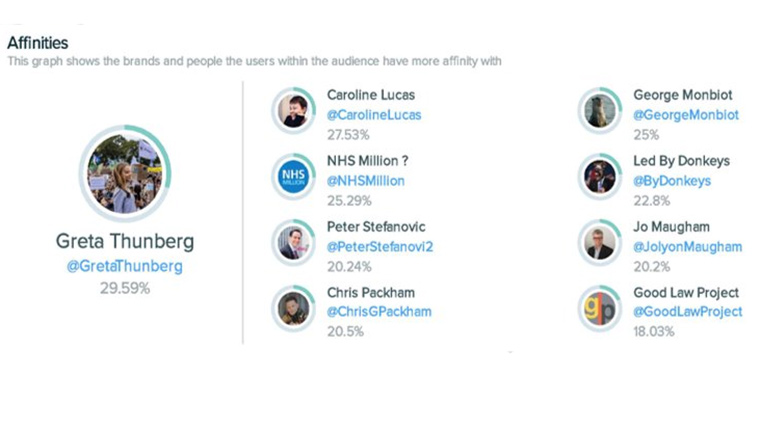
That Greta Thunberg and Chris Packham are influential on this topic isn’t surprising, but there are also politicians, journalists and charities worth connecting with on climate change campaigns.
5. Strategy – where to focus your spend
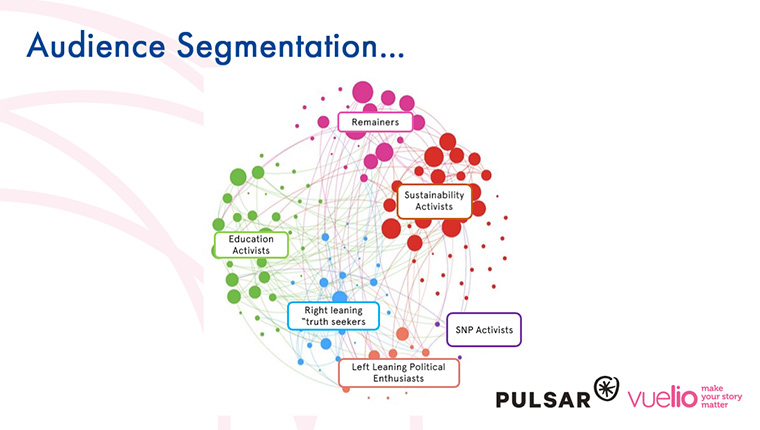
With data on your audience, when they’re online as well as what and who they engage with, you can plan your strategy. On mapping how information travels from person to person within this community, it’s clear this conversation is highly political, but that each pocket of influence is not yet fully connected.
It takes time for content to be shared across this fragmented group, meaning a ‘go viral fast’ strategy won’t work as well as a slower and wider-reaching roll-out for a climate change-focused campaign.
For more on how social listening can help with every aspect of your campaigns, check out Pulsar’s solutions.





Leave a Comment